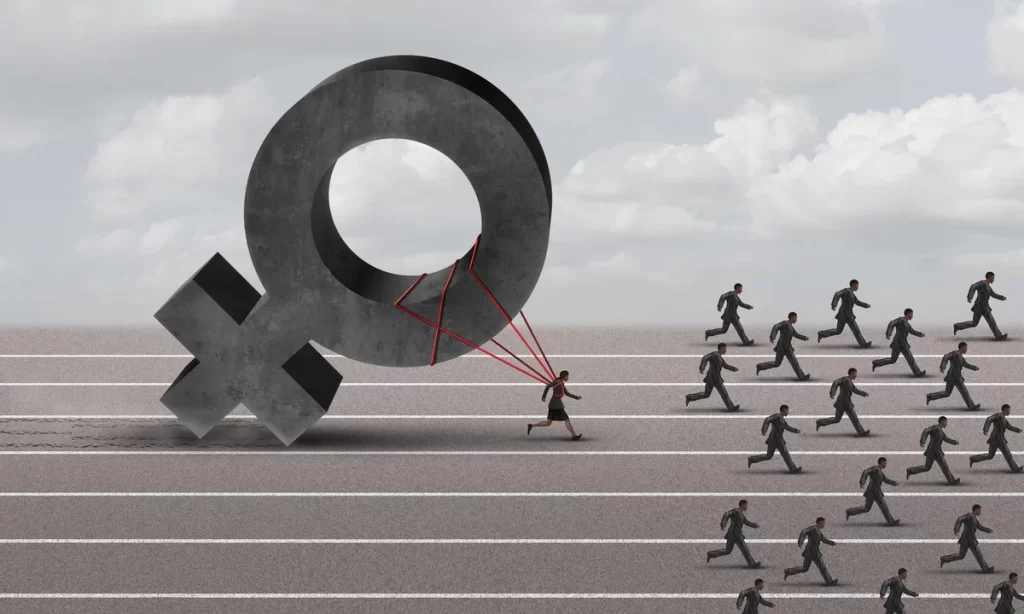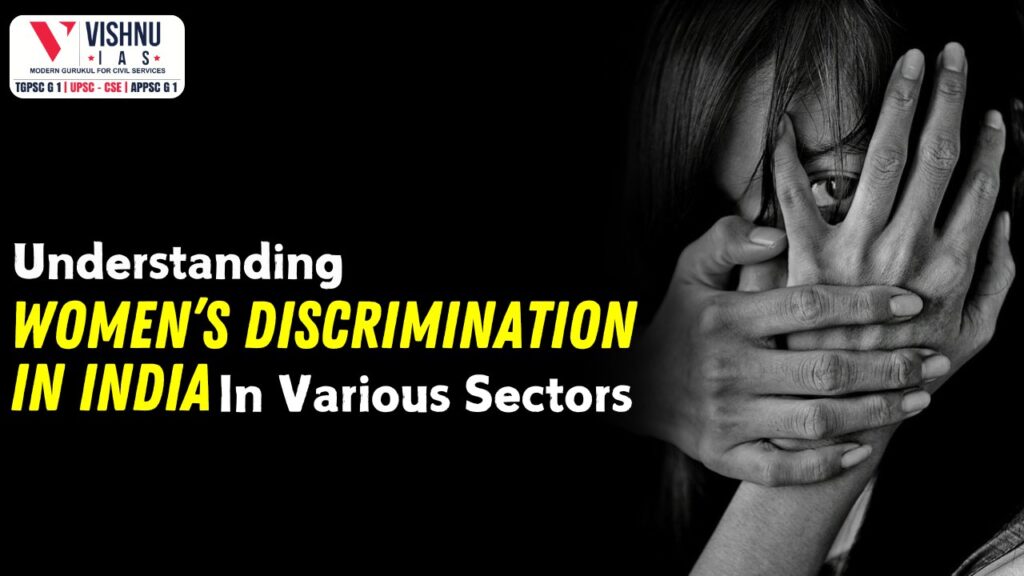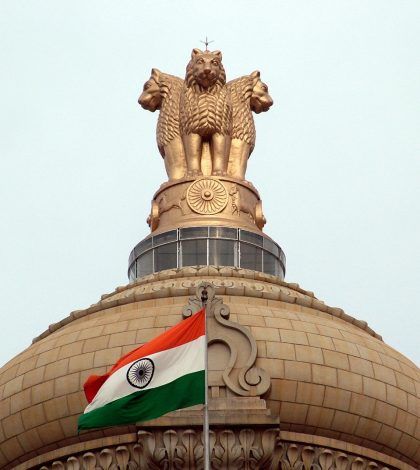Women's discrimination in India
- Women’s discrimination in India is a multifaceted issue that permeates various sectors, including education, employment, healthcare, and cultural representations, particularly in the film industry. Despite significant strides towards gender equality, societal norms and systemic barriers continue to undermine women’s rights and opportunities.
- According to the National Family Health Survey (NFHS-5), nearly 29% of women aged 15-49 have experienced physical violence, while the Global Gender Gap Report 2023 ranks India 127th out of 146 countries in terms of gender parity.
- These statistics highlight the urgent need to address discrimination against women across all spheres of life.
Manifestations of Women's Discrimination in Various Sectors

Education:
- Gender Gap in Literacy: Despite progress, a gender gap persists in literacy rates, with 70.3% of women being literate compared to 84.7% of men (NFHS-5).
- School Dropout Rates: Societal norms and economic pressures often lead to higher dropout rates for girls, particularly in rural areas.
- Limited Access to Higher Education: Cultural norms and financial constraints often limit women’s access to higher education, particularly in STEM fields.
- Case Study: The ‘Beti Bachao, Beti Padhao’ scheme aims to address gender disparity by promoting education for girls, but implementation gaps remain, particularly in remote areas.
- Example: In Rajasthan, a successful NGO initiative ‘Educate Girls’ has helped reduce dropout rates by involving community volunteers to encourage families to send their daughters to school.
Employment:
- Workforce Participation: Women’s participation in the workforce is alarmingly low at 21.8% (World Bank, 2022), a decline exacerbated by the pandemic.
- Wage Disparity: Women earn significantly less than men for the same work, with a gender pay gap of 19% (Monster Salary Index, 2022).
- Glass Ceiling Effect: Women face barriers to promotion and leadership roles, often being confined to lower-paying, less secure jobs.
- Case Study: The Mahila E-Haat initiative under the Ministry of Women and Child Development empowers women entrepreneurs by providing an online marketing platform, but its reach is limited.
- Example: The Maternity Benefit (Amendment) Act, 2017, extends paid maternity leave to 26 weeks but is often seen as a deterrent by employers who avoid hiring women to circumvent these costs.
Healthcare:
- Access to Healthcare: Women, particularly in rural areas, have limited access to healthcare services, leading to high maternal mortality rates (113 per 100,000 live births, NFHS-5).
- Reproductive Rights: Women often face challenges in accessing contraceptive services, safe abortion, and other reproductive health services.
- Mental Health: Discrimination and gender-based violence contribute to higher rates of mental health issues among women, with limited access to mental health services.
- Case Study: The Janani Suraksha Yojana (JSY) has increased institutional deliveries, yet maternal health remains a concern due to inadequate healthcare infrastructure.
- Example: In Tamil Nadu, the Muthulakshmi Reddy Maternity Benefit Scheme provides financial assistance to pregnant women, improving maternal health outcomes.
Cultural Representations in the Film Industry:
- Stereotyping: Women are often stereotyped in roles that reinforce patriarchal norms, contributing to societal discrimination.
- Casting Couch: The term ‘casting couch’ highlights the sexual exploitation women face in exchange for roles, a practice normalized and trivialized in the industry.
- Lack of Representation: Women, particularly in leadership roles, are underrepresented in the film industry, with few female directors, producers, and scriptwriters.
- Case Study: The #MeToo movement exposed rampant sexual harassment in the film industry, leading to some accountability but also significant backlash against survivors.
- Example: The Justice Hema Committee report, following a sexual assault case in the Malayalam film industry, highlighted the systemic exploitation of women, advocating for structural reforms.
Measures to Combat Women's Discrimination



Legal Reforms and Enforcement:
- Strengthening Legal Frameworks: Enforce existing laws such as the Sexual Harassment of Women at Workplace (Prevention, Prohibition, and Redressal) Act, 2013, with stricter penalties and faster judicial processes.
- Case Study: The Vishaka Guidelines laid down by the Supreme Court in 1997 were a landmark in addressing workplace harassment, later codified into law in 2013
- Example: The government could consider revising the legal definition of ‘workplace’ to better protect women in informal sectors, including domestic workers and those in the film industry.
Education and Awareness Programs:
- Promoting Gender Sensitization: Introduce comprehensive gender sensitization programs in schools, workplaces, and communities to challenge discriminatory norms.
- Public Campaigns: Initiatives like the ‘Ladli’ scheme in Haryana, which incentivizes the birth of girl children, should be scaled up and coupled with broader public awareness campaigns.
- Case Study: The ‘Pink Chaddi’ campaign in 2009 was a grassroots movement that effectively used humour and mass participation to challenge moral policing and gender discrimination.
- Example: The Indian film industry can be encouraged to produce content that challenges gender norms and portrays women in empowering roles, similar to films like “Chak De! India” and “Dangal.”
Institutional Reforms in the Film Industry:
- Establish Independent Redressal Mechanisms: Create independent bodies, separate from internal complaints committees, to address sexual harassment in the film industry, as recommended by the Justice Hema Committee.
- Mandatory Compliance and Audits: Introduce mandatory gender audits in film production companies and enforce compliance with gender equity norms.
- Case Study: The #MeToo movement led to the formation of several internal committees in film industries worldwide, though their effectiveness varies.
- Example: India can adopt a model similar to the U.S. Hollywood Commission, which works on creating a safer, more equitable workplace in the entertainment industry.
Economic Empowerment:
- Supporting Women Entrepreneurs: Expand and strengthen initiatives like the Stand Up India Scheme to provide financial support and mentorship to women entrepreneurs.
- Skill Development: Implement targeted skill development programs to increase women’s employability in diverse sectors, particularly in emerging industries like technology.
- Case Study: The Self-Help Group (SHG) movement, particularly in states like Kerala and Tamil Nadu, has empowered millions of women economically, though challenges like access to credit remain.
- Example: Expand digital literacy programs for women, as seen in the Digital Saksharta Abhiyan (DISHA) initiative, to bridge the digital gender divide.
Strengthening Support Systems:
- Enhanced Support Services: Establish more women’s shelters, crisis centres, and helplines to provide immediate support to women facing violence and discrimination.
- Mentorship Programs: Develop mentorship and support networks for women in industries where they are underrepresented, including film and technology.
- Case Study: The Nirbhaya Fund, set up after the 2012 Delhi gang rape, finances projects aimed at enhancing women’s safety, but its utilization has been criticized as inadequate.
- Example: The Kerala government’s Kudumbashree project, which focuses on women’s empowerment and poverty eradication, serves as a model for integrating support systems with economic development.
Conclusion
- Women’s discrimination in India remains a pervasive issue that requires a concerted effort from all sectors of society. The film industry, as a significant cultural force, has a unique responsibility to challenge stereotypes and promote gender equality through its narratives.
- By implementing effective policies, supporting female representation, and fostering public awareness, India can move towards a more equitable society where women are valued for their contributions and capabilities, rather than being constrained by outdated norms.
- As the Global Gender Gap Report indicates, achieving gender parity is not only a moral imperative but also essential for the country’s socio-economic development.


